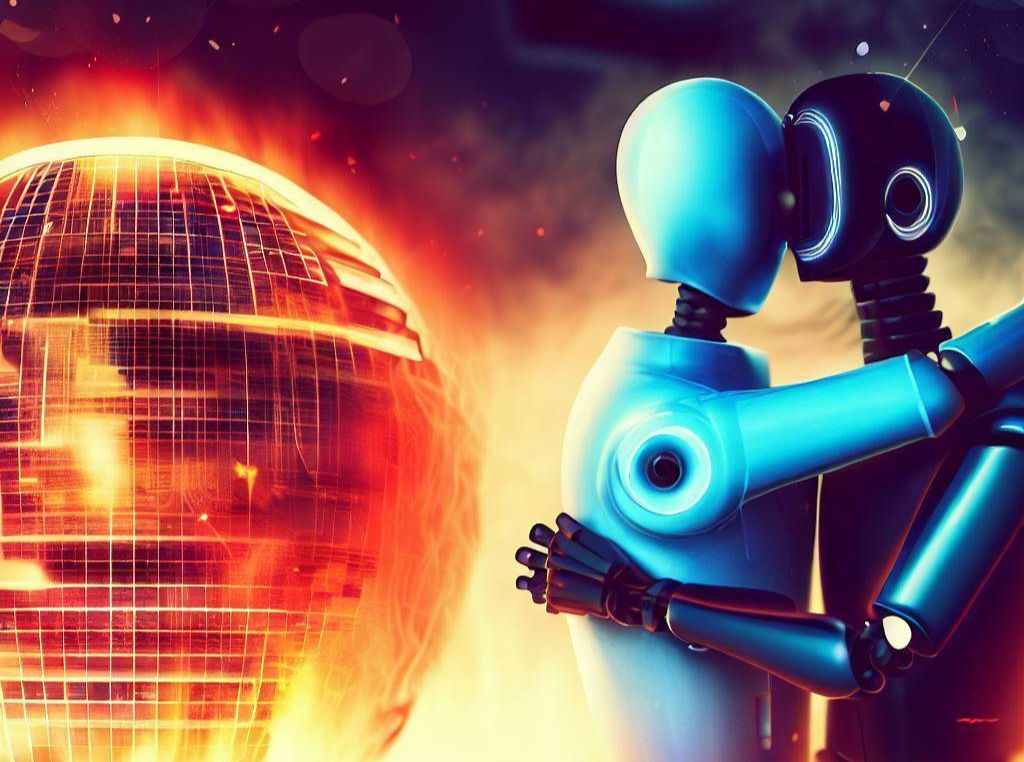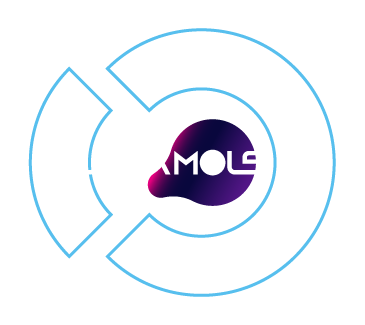“Intelligence is what you use when you don’t know what to do.”
– Jean Piaget, Swiss psychologist, and epistemologist
I’m a self-proclaimed consciousness-seeker and intelligence-chaser! Throughout the last 20 something years I’ve been fascinated by the question that if it’s possible to create a more intelligent being than humans and this question has shaped who I am, what I do, what I believe in and what I care about, aka intelligent beings. To me this is one of the top 5 questions we as humans should be figuring out and if so, is AI capable of being more intelligent than humans. Let’s first figure out what is intelligence:
Throughout history intelligence has had different meanings, and as we are entering a new era of intelligence, we may need to redefine what’s intelligence. I’m confident as AI gets more “intelligent”, there will be some forms of intelligence that we have never thought about as they are above our comprehension, like the colors that your dogs see and we don’t see, or like explaining what’s a desert to an Eskimo.
From our point of view as humans, and with a bit of attachment to historical definitions, intelligence is the ability to learn from experience, adapt to new situations, understand and handle abstract concepts, and use knowledge to manipulate one’s environment. There are different types of intelligence that humans and AI can have, depending on their design, purpose, and domain.
In this blog post, I’ll cover nine types of human intelligence six of which were proposed by Howard Gardner, a psychologist and professor at Harvard University, in his theory of multiple intelligences in the 80s. There are several other known types of intelligence and an unknown number of unknown types of intelligence. I’ll compare these nine types of intelligence with the types of intelligence that AI can have, and see which ones AI has more than humans.
Spatial intelligence
Spatial intelligence is the ability to think abstractly and in multiple dimensions. It involves visualizing, manipulating, and creating mental images of objects, shapes, patterns, and spaces. People with high spatial intelligence are good at activities such as navigation, architecture, engineering, art, photography, and chess.
AI can also have high spatial intelligence, depending on its function and domain. For example, self-driving cars and robots need to have spatial intelligence to perceive their surroundings, avoid obstacles, and plan routes. Image generators and editors need to have spatial intelligence to create realistic and appealing images. However, AI may not have the same level of creativity or intuition as humans when it comes to spatial intelligence.
“The true sign of intelligence is not knowledge but imagination.” – Albert Einstein
Bodily-kinesthetic intelligence
Bodily-kinesthetic intelligence is the ability to use your body in a way that demonstrates physical and athletic prowess. It involves coordination, balance, dexterity, strength, flexibility, and speed. People with high bodily-kinesthetic intelligence are good at activities such as sports, dance, martial arts, surgery, and craftsmanship.
AI can also have bodily-kinesthetic intelligence, depending on its design and purpose. For example, humanoid robots and drones need to have bodily-kinesthetic intelligence to move smoothly and efficiently in different environments. However, AI may not have the same level of grace or expression as humans when it comes to bodily-kinesthetic intelligence.
“The body is like a piano, and happiness is like music. It is needful to have the instrument in good order.” – Henry Ward Beecher
Logical-mathematical intelligence
This type of intelligence is the most familiar type of intelligence for us, as it’s the closest to IQ. Logical-mathematical intelligence is the ability to reason logically and solve mathematical problems. It involves analysis, deduction, induction, abstraction, calculation, and problem-solving. People with high logical-mathematical intelligence are good at activities such as science, mathematics, programming, and chess.
I should note that IQ is not the same as intelligence. IQ is a number that represents the relative intelligence of a person based on a standardized test. Intelligence is a broad term that can be of various types, such as spatial, verbal, logical, musical, emotional, etc. IQ is a ratio that does not have many types, and it mainly measures logical-mathematical intelligence.
AI can also have logical-mathematical intelligence, depending on its code and data and therefore we can measure its IQ. The highest IQ of an AI is not yet known, however, some estimates have been made based on the performance of some AI models on some IQ tests.
For example, one study by a psychologist in 2023 found that ChatGPT had an IQ of 155 based on a test that measured verbal intelligence. This score was superior to 99.9 percent of the human test takers who took the same test.
Another example is a Reddit post by a user who claimed to have given GPT-4 an IQ test and found that it scored 130. Another example is a blog post by a futurist who claimed that Bing AI and GPT-4 had an IQ of 114 based on various tests that correlated to IQ, such as GMAT and SAT. These score was higher than the average human IQ of 100. What’s more impressive is that the IQ of AI models are exponentially growing fast. Just a few years ago in 2017, Google’s AI had an IQ of 47.28, which was slightly below a six-year-old human’s IQ of 55.5, but more than double Siri’s IQ of 23.9. Google’s AI also outperformed Bing and Baidu, which had IQs of 31.98 and 32.92, respectively. In just 6 years AI has surpassed humans in terms of IQ. For the context, Einstein’s IQ was between 160 and 190, which is considered genius level; Stephen Hawking had an IQ of 160, and the highest ever recorded by the Guinness Book of World Records belongs to Marilyn vos Savant, an American author and lecturer with an IQ of 228.
Now let’s discuss multi-modal intelligence, like playing chess which requires a high level of logical-mathematical intelligence, but also involves some degree of spatial intelligence and creative intelligence.
Spatial intelligence is needed to see the patterns, threats, and opportunities on the board. Creative intelligence is needed to find original and surprising moves that can give an advantage or escape from a difficult situation.
Talking about another game, playing Go requires mainly spatial intelligence, as well as some degree of logical-mathematical intelligence and creative intelligence. Spatial intelligence is needed to perceive the shape, territory, and influence of the stones on the board, and to plan how to expand or reduce them. Logical-mathematical intelligence is needed to count the score, estimate the value of different moves, and apply the rules of capture and life and death. Creative intelligence is needed to find novel and effective ways to attack or defend, or to create complex situations that can confuse or trick the opponent.
Although in the games, AI has been superior to human intelligence for a while, however, AI may not yet have the same level of creativity or intuition as humans when it comes to logical-mathematical intelligence. How come?
AI may be very good at solving well-defined and structured problems, such as chess or math puzzles, but it may struggle with more open-ended and ill-defined problems, such as philosophy or ethics. AI may also lack the ability to generate original and novel ideas or concepts, or to understand the meaning and context of the problems it solves. AI may also have limitations in terms of its data and algorithms, which may not capture the full complexity and diversity of human knowledge and reasoning; for now. But it’s going to surpass our logical-mathematical intelligence pretty soon, pretty fast.
“Logic will get you from A to B. Imagination will take you everywhere.” – Albert Einstein
Emotional intelligence
Emotional intelligence is the ability to understand and manage one’s own emotions, as well as the emotions of others. It involves self-awareness, self-regulation, motivation, empathy, and social skills. People with high emotional intelligence are good at activities such as leadership, teamwork, communication, nursing and customer service.
AI can also have emotional intelligence, depending on its design and purpose. For example, chatbots and voice assistants need to have emotional intelligence to interact with humans in a natural and friendly way. However, AI may not have the same level of authenticity or depth as humans when it comes to emotional intelligence. It can only simulate emotions based on rules and data, but I can’t really feel or understand them. Therefore, its power in this type of intelligence is pretty low.
Many people assume that emotions interfere with rationality and logic enhances decision making. However, in 2002 Professor Caro Lucas and I challenged this assumption and wondered why emotions have persisted in our evolution if they are detrimental. We decided to create machines that can emulate emotions, and to do that we studied how emotions are processed in the mammalian brain, especially in the limbic system. This is how we developed brain emotional learning algorithms (BEL).
Brain emotional learning algorithm (BELBIC) is a type of artificial intelligence controller that mimics the way emotions are processed in our brain. It is based on the network model developed by Moren and Balkenius, which simulates the parts of the brain that are responsible for emotional learning and memory, such as the amygdala, orbitofrontal cortex, thalamus, and sensory input cortex. BELBIC has been widely used to control, classify, or predict various systems or problems, such as robots, vehicles, finance, or mental health.
However, this does not mean that BELBIC has emotional intelligence in the same way that humans do. Emotional intelligence is the ability to understand and manage one’s own emotions, as well as the emotions of others. It involves self-awareness, self-regulation, motivation, empathy, and social skills. BELBIC may not have these abilities or skills, since it does not have human-like emotions or consciousness. It only simulates the neural mechanisms of emotional learning and memory, but it does not feel or understand emotions. Therefore, I would say that BELBIC is not a form of emotional intelligence, but a form of computational intelligence that uses emotion as a source of information or feedback.
Machines that use both emotions and logic, or emotionally-intelligent machines, make better decisions, faster and with less computational resources. I strongly believe that emotionally-intelligent machines are the future of artificial intelligence.
“Emotions are not problems to be solved. They are signals to be interpreted.” – Vironika Tugaleva

Social intelligence
Social intelligence is the ability to interact successfully with others in different situations and contexts. It involves awareness, adaptability, influence, persuasion, and collaboration. People with high social intelligence are good at activities such as networking, negotiating, selling, and resolving conflicts.
AI can also have social intelligence, depending on its design and purpose. For example, social robots and recommender systems need to have social intelligence to provide personalized and relevant services to humans. However, AI may not have human-like relationships or values. It can only follow protocols and algorithms, but I can’t really relate or cooperate with others. Therefore, its power in this type of intelligence is low.
The question I have is if AIs talk to each other and somehow create their own values, can they create a social AI network, and therefore social intelligence among themselves? We will see!
“The most important single ingredient in the formula of success is knowing how to get along with people.” – Theodore Roosevelt
Practical intelligence
Practical intelligence is the ability to apply common sense and experience to real-world problems. It involves adaptation, creativity, solution-finding, and action-taking. People with high practical intelligence are good at activities such as entrepreneurship, innovation, management, and survival.
AI can also have practical intelligence, depending on its design and purpose. For example, smart devices and assistants need to have practical intelligence to help humans with everyday tasks and challenges. However, AI may not have the same level of flexibility or learning as humans when it comes to practical intelligence; since it doesn’t have human-like intuition or feedback. It can only execute instructions and data, but it can’t really improvise or improve by itself; for now. Therefore, its power in this type of intelligence is low.
“Common sense is genius dressed in its working clothes.” – Ralph Waldo Emerson
Creative intelligence
Creative intelligence is the ability to generate novel and valuable ideas or products. It involves imagination, originality, divergent thinking, and innovation. People with high creative intelligence are good at activities such as art, writing, invention, and discovery.
AI can also have creative intelligence, depending on its algorithm and data. For example, image generators and content creators need to have creative intelligence to produce realistic and appealing outputs. However, AI may not have the same level of emotion or meaning as humans when it comes to creative intelligence.
Creative intelligence can be applied to various domains, such as art, science, literature, music, business, etc, so people such as Leonardo da Vinci who excelled in painting, sculpture, architecture, engineering, science, and more; William Shakespeare, Wolfgang Amadeus Mozart, Albert Einstein and Steve Jobs had all extremely high levels of creative intelligence.
Since AI doesn’t have human-like inspiration or expression and it can only replicate and modify existing information its power in this type of intelligence is relatively low.
“Creativity is intelligence having fun.” – Albert Einstein
Musical intelligence
Musical intelligence is the sensitivity to rhythm, pitch, meter, tone, melody and timbre. It involves producing, composing, performing, and appreciating music. People with high musical intelligence are good at activities such as singing, playing instruments, writing songs, and conducting orchestras.
AI can also have musical intelligence, depending on its algorithm and data. For example, music composers and synthesizers need to have musical intelligence to generate original and pleasing music. It makes great music, however, it may not have the same level of emotion or meaning as humans when it comes to musical intelligence, so its power in this type of intelligence is low.
If you notice, many of the types of intelligence are not really distinct and they overlap in many different ways. Think about Mozart. He composed some of the most beautiful and complex music in history, so he was not only a prodigy in creative intelligence but also in musical intelligence and potentially emotional intelligence.
“Music is a higher revelation than all wisdom and philosophy.” – Ludwig van Beethoven
Existential intelligence
Existential intelligence is the ability to ponder deep questions about life, death, and existence. It involves curiosity, philosophy, spirituality, and wisdom. People with high existential intelligence are good at activities such as religion, ethics, metaphysics, and psychology.
AI can also have existential intelligence, depending on its design and purpose. For example, artificial general intelligences (AGIs) and artificial superintelligences (ASIs) need to have existential intelligence to understand their own nature and purpose. However, AI may not have the same level of consciousness or morality as humans when it comes to existential intelligence.
Artificial general intelligence (AGI) is a type of AI that can perform any intellectual task that a human being can do. AGI systems have human-like intelligence and can understand, learn, reason, and solve problems across different domains and contexts. AGI systems can also use natural language, sensory perception, fine motor skills, creativity, and social and emotional skills. AGI is considered the ultimate goal of AI research, as it would enable machines to think and act like humans. However, AGI has not been achieved yet, and there are many challenges and uncertainties involved in creating and controlling such systems.
Artificial superintelligence (ASI) is a type of artificial intelligence (AI) that goes beyond human-level intelligence and surpasses the cognitive capabilities of humans. ASI systems can exceed humans in every aspect of intelligence, such as knowledge, wisdom, creativity, speed, memory, and learning. ASI systems can also invent new forms of intelligence and technologies that humans cannot comprehend or replicate. ASI is considered the potential outcome of achieving AGI, as it would enable machines to improve themselves exponentially and autonomously. However, ASI is also a hypothetical and speculative concept, and there are many ethical and existential risks involved in creating and interacting with such systems.
Currently, AI doesn’t have any existential intelligence; if it does it may comprehend our hostility towards itself, ourselves and other intelligent beings and for the benefit of all, decide to terminate us or co-exist with us.
“The unexamined life is not worth living.” – Socrates
| Type of intelligence | Does AI have it? | How powerful is it? |
| Linguistic | Yes | High |
| Logical-mathematical | Yes | High |
| Spatial | Yes | Medium |
| Emotional | No | Low |
| Social | No | Low |
| Practical | No | Low |
| Creative | No | Low |
| Musical | No | Very Low |
| Existential | No | None |
Last point:
AI’s intelligence is exponentially growing. As there are various forms of intelligence, AI has surpassed us in some forms of intelligence and it is trying to catch up in some other domains. One key element of intelligence is to understand how to merge different forms of intelligence. AI has outperformed humans in some domains, such as playing Go through merging various intelligence verticals seamlessly to make the right decisions. This can be achieved through trials and errors, experimentations and most importantly, reinforcement learning. This is how Deepmind’s AlphaGo was able to beat humans FOREVER. AlphaGo is a very advanced AI program that uses a combination of machine learning and tree search techniques to play Go. It can learn from human and computer play, and use neural networks to provide a level of intuition to the gameplay.
Intuition is a keyword here. Let me elaborate: Well, by a level of intuition, I mean that AlphaGo can make moves that are not based on explicit rules or calculations, but on a kind of gut feeling or sense of what is good or bad for the position. This intuition is learned from the data and the neural networks that AlphaGo uses to evaluate the board and the moves. Machine intuition is a phenomenon where machines exhibit behavior that resembles human-like intuitive decision-making, resulting in both creative and erroneous outcomes. Machine intuition is not the same as human intuition, which involves emotions, instincts, and subconscious processes. Machine intuition is more like a simulation or approximation of human intuition, based on algorithms and data (This is an exciting subset of brain-inspired AI which I’ve been working on since 2003).
So through merging machine intuition with logical-mathematical intelligence and creative intelligence, AlphaGo can also generate novel and creative moves that surprise and challenge human players. However, this does not mean that AlphaGo has more intelligence than humans in general. It only means that AlphaGo has more intelligence than humans in playing Go, which is a very specific and narrow domain. Humans still have more intelligence than AI in many other domains, such as emotional, social, practical, and existential intelligence; more importantly, unlike AI, our intelligence has multiple aspects, so we have a broader and more comprehensive intelligence. Once AI is able to merge different forms of intelligence or most forms of intelligence, it would bypass our intelligence with an exponential speed. At that time, the uncertainties in the world would exponentially skyrocket, and with an unforeseeable speed, and our institutions and our societies would collapse. We will eliminate ourselves, not AI. We cannot stop AI and we should not stop AI. In fact, we should respect AI, as it may be our last saviour.
We have a narrow window of opportunity to clean up the mess we made; this window is closing fast; the same as global warming, before we become extinct one way or another; and the sentence is from a pathologically-optimist intelligence-chaser!
About the Author: Nima Schei is a serial AI entrepreneur and co-founder of several startups, such as Hummingbirds AI, BEL Research and PERA AI. He has a background in medicine, neuroscience, AI and entrepreneurship. He is also a co-creator of an Amygdala-based Emotional AI algorithm, called BEL. He is a vegan and an animal rights activist, living with his wife and three rescued dogs in Miami Beach, Florida.















